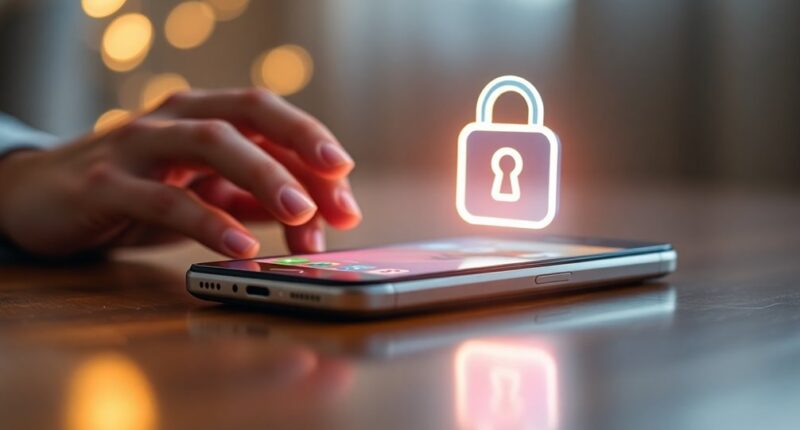End-to-end encryption means that only you and the recipient can access the messages exchanged, keeping your conversations private and secure. During this process, your messages are converted into a scrambled format called ciphertext while in transit. This guarantees that even if someone intercepts the messages, they won't be able to decipher them without the proper key. Popular messaging apps, like WhatsApp and Signal, use this method to protect your data from unauthorized access. It's crucial to understand how these systems work to enhance your security further, so there's more to explore about secure messaging practices and technologies.
Key Takeaways
- End-to-end encryption (E2EE) ensures that only the sender and recipient can read the messages, preventing unauthorized access during transmission.
- Messages are encrypted on the sender's device and decrypted only on the recipient's device, maintaining confidentiality throughout the process.
- E2EE protects against eavesdropping by third parties, including service providers and hackers, enhancing the security of communication.
- Popular messaging platforms like Signal, WhatsApp, and Telegram utilize E2EE to safeguard users' private conversations from interception.
- While E2EE significantly increases security, users must also practice good key management and awareness of potential vulnerabilities.
Core Principles of Encryption
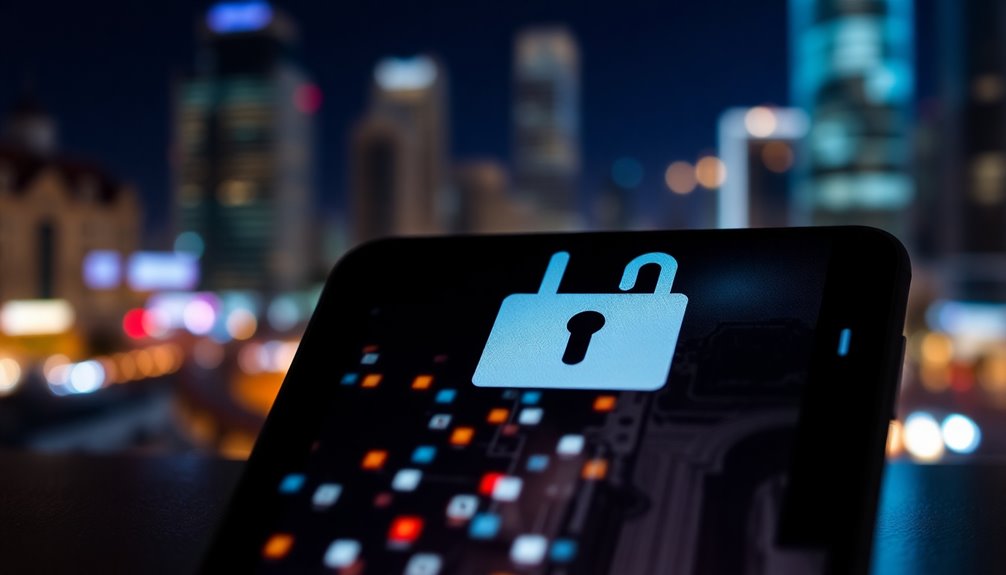
Encryption serves as a digital fortress, safeguarding your data from prying eyes. At its core, encryption relies on key generation, which uses a public key for encryption and a private key for decryption. The longer your keys, the more secure your data becomes, as complex algorithms scramble plaintext into unreadable ciphertext. Encryption deters data breaches by protecting sensitive information and making it more difficult for attackers to access your data.
There are two main encryption methods: symmetric, which uses one shared key, and asymmetric, which employs a public-private key pair. Key management is essential; keep your private keys secret and share public keys safely.
Additionally, robust security measures like key randomization and adhering to key length standards help protect your sensitive information, ensuring only the intended recipient can decrypt your data.
Understanding Secure Communication Methods
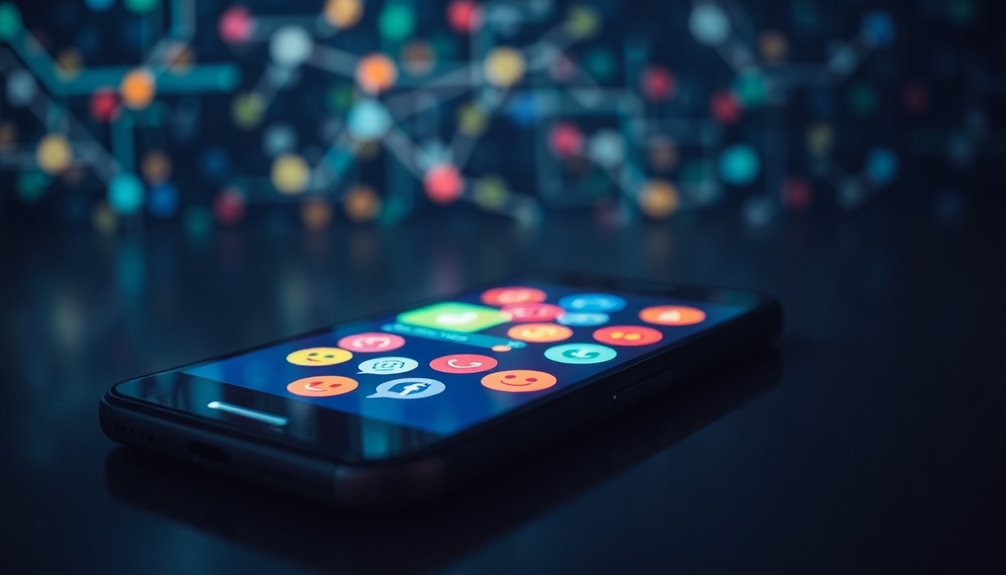
When it comes to protecting your communications, understanding secure methods is essential. You should start with encryption protocols like HTTPS, SSL, and TLS, which provide encrypted connections for web traffic. A VPN can create a secure tunnel over less stable networks, while IPsec secures IP communications by encrypting each packet. For managing network devices, SSH offers secure access. Authentication mechanisms also play an important role. Digital certificates prevent impersonation, and multi-factor authentication adds extra layers of security. Finally, maintaining data integrity and non-repudiation is critical. Hash functions and digital signatures guarantee your messages are authentic and unaltered. Additionally, employing secure protocols like TLS is vital to protect data in transit from potential eavesdroppers.
Encryption Process Explained
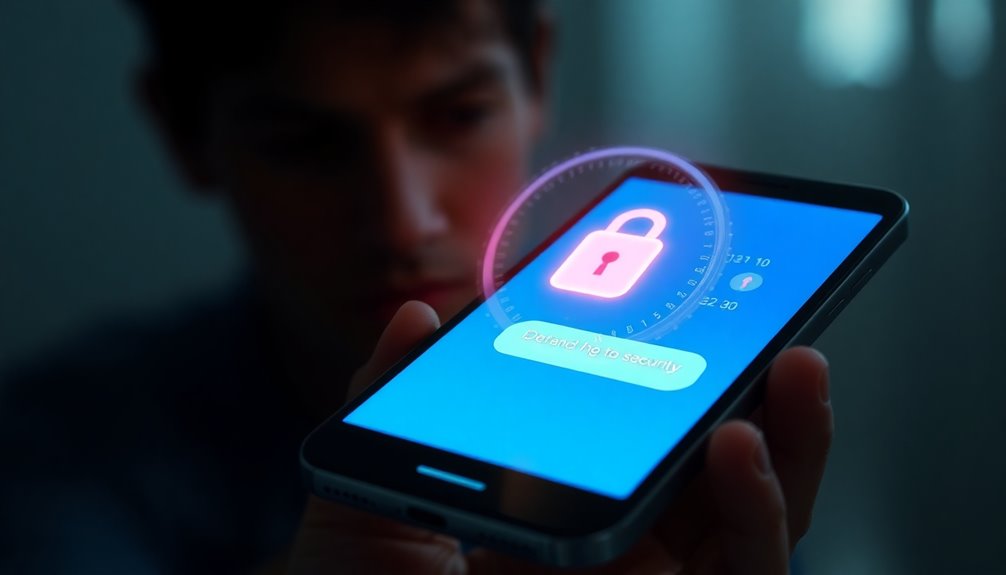
The process of encryption transforms readable information into a secure format, ensuring that sensitive data remains protected. You start with plaintext, which is then scrambled into ciphertext using encryption algorithms. These algorithms rely on mathematical methods and cryptographic keys, making the correct key vital for decryption. There are two main types of encryption: symmetric, which uses a single shared key, and asymmetric, involving a public key for encryption and a private key for decryption. The key's length increases security; longer keys make it more difficult for attackers to decode your data. Proper key management is essential, as securely storing keys prevents unauthorized access, allowing only intended recipients to convert ciphertext back into readable information. Additionally, end-to-end encryption ensures that only the sender and recipient hold the decryption keys, further enhancing the security of the data being transmitted.
Pros and Cons of Encryption
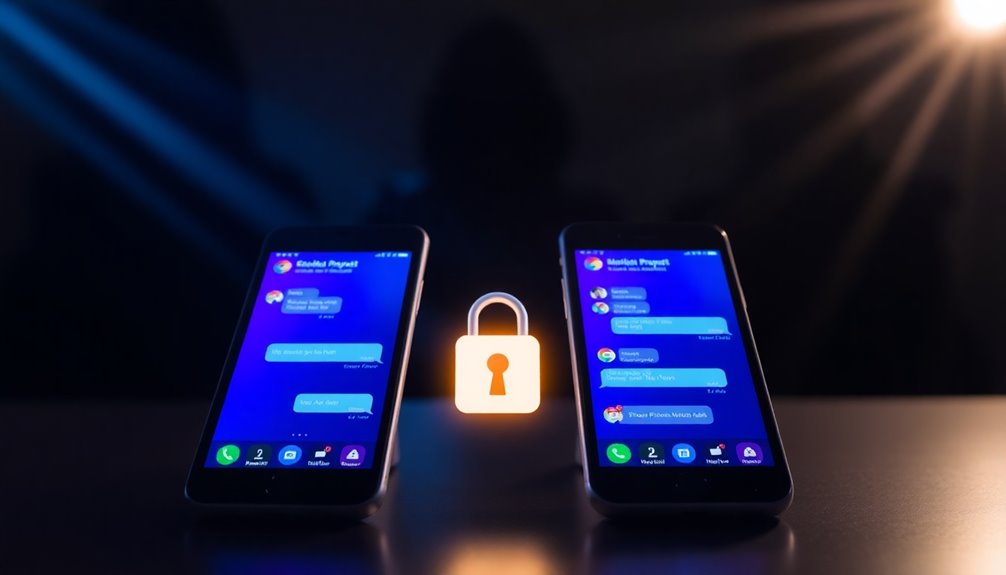
While many organizations recognize the importance of protecting their data, weighing the pros and cons of encryption is essential before implementation.
On the plus side, encryption offers robust data protection, shielding sensitive information from unauthorized access and potential breaches. It also helps you comply with regulations, particularly in industries like healthcare and finance. Additionally, implementing encryption can ensure data privacy, protecting sensitive information from unauthorized access and preventing data breaches.
However, implementing encryption comes with challenges. The costs for necessary hardware and software can add up, and managing encryption can be resource-intensive and complex.
Additionally, if you lose encryption keys, accessing your data might become impossible. While encryption enhances security and accessibility for authorized users, you must consider these trade-offs before deciding to implement it in your organization.
Encryption vs. Traditional Messaging
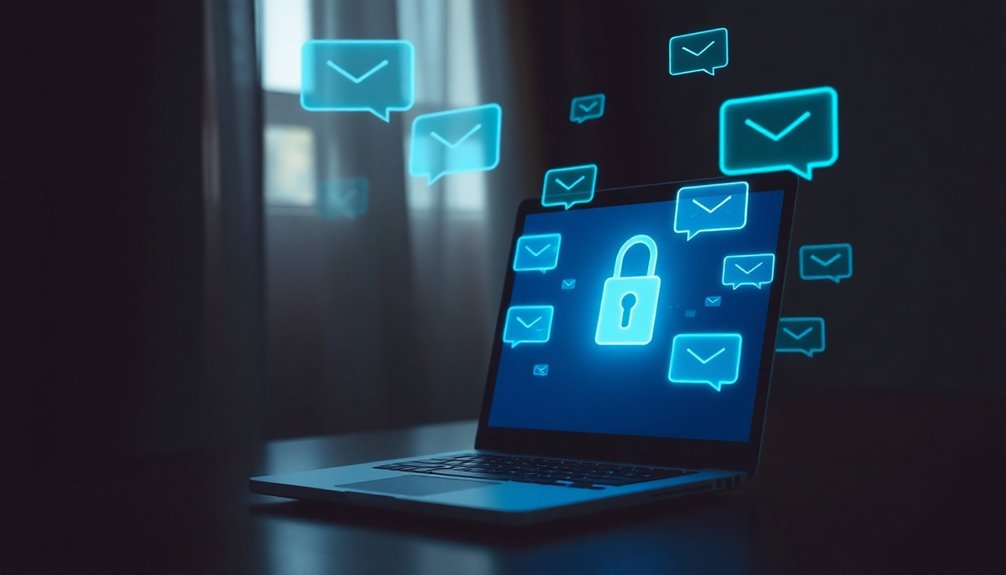
As you navigate the landscape of messaging options, understanding the fundamental differences between encryption and traditional messaging can greatly impact your data security.
Encryption techniques, like end-to-end encryption, keep your messages secure by ensuring only the intended recipient can read them. Unlike traditional messaging, where messages are stored on servers and accessible to service providers and potential hackers, encrypted messaging prevents unauthorized access. Furthermore, platforms that utilize end-to-end encryption ensure that even service providers cannot access the content of your messages.
Traditional methods often rely on standard encryption that can be compromised, leaving your data vulnerable. Plus, you usually lack control over your privacy settings with traditional services, making it essential to choose platforms that prioritize robust security features, such as disappearing messages and strong encryption methods, to better protect your communications.
Data Breaches and Vulnerabilities
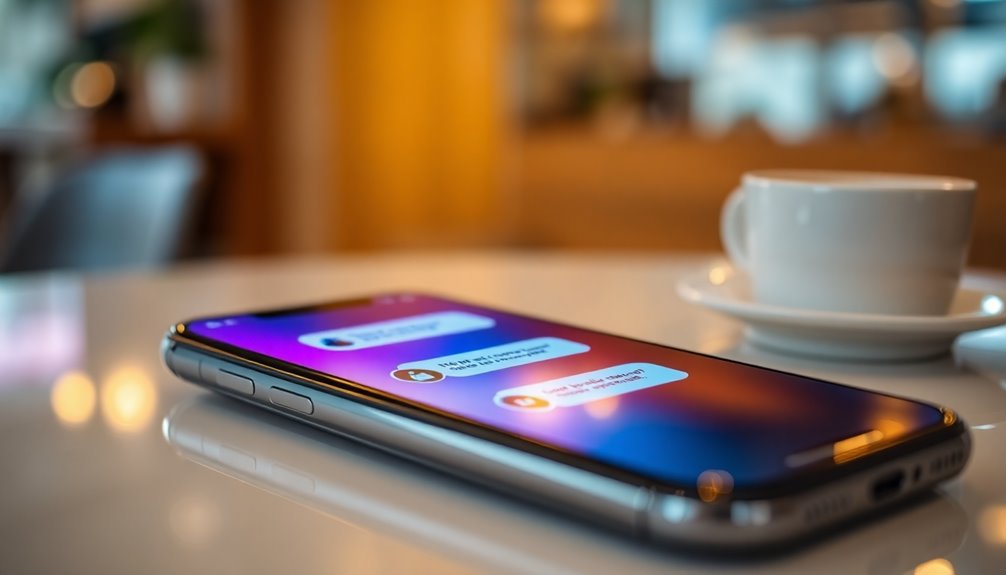
Understanding encryption's role in securing communications becomes even more important when considering the alarming frequency and impact of data breaches. In 2023 alone, over 3,205 breaches affected 353 million individuals in the U.S. Cyberattacks surged globally, impacting 343 million victims.
Industries like healthcare and finance are particularly vulnerable, with hacking accounting for nearly 80% of healthcare breaches. The average cost of a data breach hit $4.88 million, and it takes security teams about 277 days to identify and contain them. Financial motivation accounts for 71% of data breaches, highlighting the need for robust security measures.
With phishing attacks causing 36% of breaches, implementing end-to-end encryption can help safeguard your data, making stolen information useless to attackers. It's essential to recognize these vulnerabilities and take proactive steps to protect your communications.
Emerging Encryption Technologies

With the relentless evolution of cyber threats, staying ahead of the curve with emerging encryption technologies is essential for protecting sensitive information. Symmetric encryption techniques like AES and Blowfish offer robust security, while RSA provides a reliable method for secure data transmission through public-private key pairs. As quantum computing advances, traditional methods face risks, making post-quantum cryptography paramount. Lattice-based and code-based encryption methods, like NTRU and the McEliece system, are designed to withstand quantum attacks. Encryption standards play a crucial role in ensuring uniformity and trust in the implementation of these evolving technologies.
Use Strong, Unique Passwords
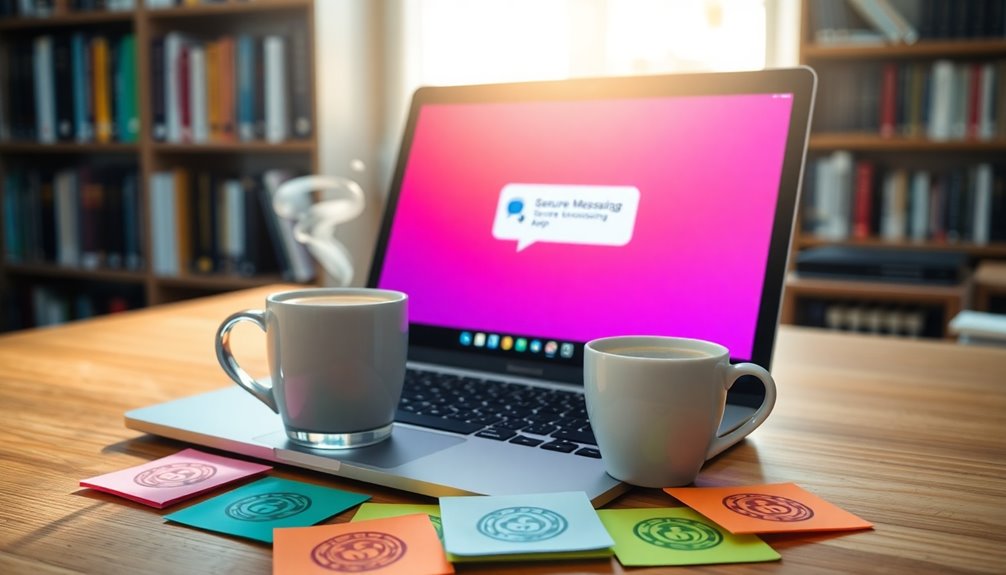
Passwords act as the first line of defense in safeguarding your digital identity, making it essential to use strong and unique ones. Aim for at least 8 characters, mixing uppercase and lowercase letters, numbers, and symbols. Strong passwords safeguard private information and online accounts, significantly reducing the risk of identity theft. Unpredictable passphrases—four to seven unrelated words—can be easier to remember while being tough to crack. Consider using password managers to store these unique passwords securely and generate new ones effortlessly.
Enhance your security by enabling two-factor authentication, which adds an extra verification step, considerably reducing unauthorized access risks. Additionally, encrypt your passwords to protect them even if stolen.
Frequently Asked Questions
Can End-To-End Encryption Protect Against Government Surveillance?
Yes, end-to-end encryption (E2EE) can protect against government surveillance.
When you use E2EE, your messages are encrypted on your device and only decrypted on the recipient's device.
This means even if the government intercepts your communication, they can't read it without the decryption key.
Since service providers don't have access to this key, they can't hand over your private conversations, enhancing your privacy and security against unauthorized access.
What Happens if I Lose My Device With Encrypted Messages?
Imagine you just misplaced your phone, and it's a sinking feeling.
If you've got encrypted messages, don't panic. Your messages remain secure since only you hold the decryption key. Without it, no one can access your chat history.
However, if you can't recover your device, you'll lose that access.
If you get a new phone, remember to set up secure storage to keep your messages safe in the future.
Are All Messaging Apps Using End-To-End Encryption?
Not all messaging apps use end-to-end encryption.
Some apps, like WhatsApp and Signal, offer it by default, guaranteeing your messages stay private.
Others, like Telegram and Google Messages, have it as an option but don't enable it automatically.
If you want complete security, you need to choose an app that prioritizes end-to-end encryption.
Always check the app's settings and features to verify your conversations remain confidential.
Is End-To-End Encryption Legal Everywhere?
End-to-end encryption isn't universally legal; its status varies by country.
In the U.S., it's mostly legal, though concerns exist regarding law enforcement access.
Meanwhile, the EU debates its regulation, with some nations pushing for restrictions.
Brazil protects correspondence secrecy, while Belarus imposes strict licensing on cryptography.
You'll need to stay informed about your local laws, as compliance is essential for using end-to-end encryption securely and legally.
How Can I Verify if My Messages Are Encrypted?
You might think all your messages are encrypted, but that's not always the case.
To verify if your messages are encrypted, check the details in your email client. In Gmail, click "Show details" to see the encryption type. For Office 365, look for a banner indicating encryption.
Using apps like PreVeil guarantees end-to-end encryption, so your messages stay secure from sender to recipient.
Always be vigilant about your data's security!
Conclusion
You might think that end-to-end encryption is just another tech buzzword, but it's essential for your privacy. By ensuring that only you and the intended recipient can read your messages, it protects your conversations from prying eyes. While no system is perfect, the benefits far outweigh the risks. Embracing secure messaging not only safeguards your data but also empowers you to communicate freely without fear. So, make the switch and take control of your privacy today!
